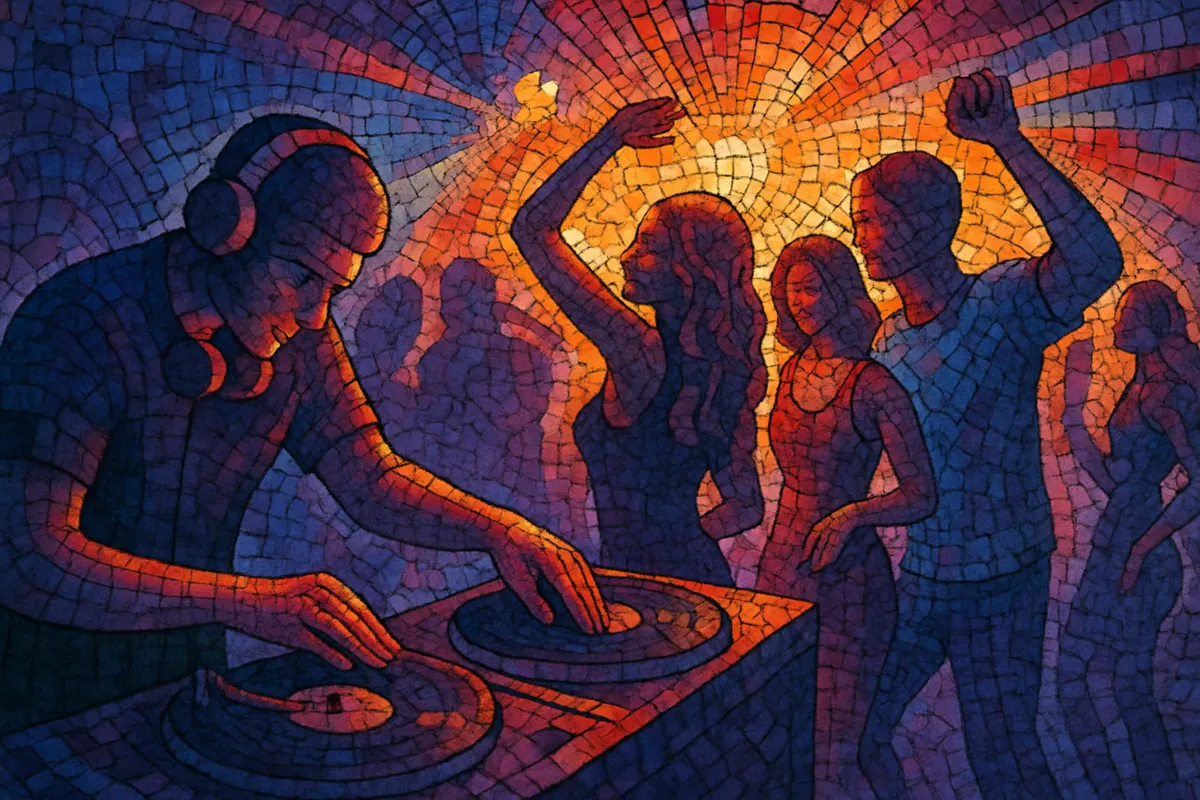Club is an umbrella term for dance-focused, DJ-driven music created primarily for nightclubs, featuring steady four-on-the-floor beats, extended arrangements for mixing, and hooky vocal or instrumental motifs designed to move a crowd.
The style prioritizes rhythm, groove, and energy management over intricate song structures. Tracks often come as 12-inch or extended mixes, emphasize strong kick drums, syncopated basslines, and percussive loops, and make heavy use of breakdowns, builds, and drops to structure the dancefloor experience.
Club music emerges from the disco era’s nightclub culture, where extended 12-inch mixes and DJ techniques shaped tracks for continuous dancing. After disco’s commercial peak, post-disco and boogie aesthetics, along with New York garage and Chicago house, drove a functional, floor-first approach. Remixer-producers like Shep Pettibone and Jellybean Benitez helped codify the “club mix” format with longer intros/outros and dynamic breakdowns.
As house, hi-NRG, Italo-disco, and early techno spread, “club” became a broad descriptor for DJ-oriented hits that dominated dance charts and nightlife. Vocal-led anthems and piano/organ stabs became staples, with artists such as Black Box, Technotronic, Inner City, and C+C Music Factory carrying the sound worldwide. Radio edits brought club sensibilities into pop, while extended versions powered the club floor.
Global superclubs cemented club’s big-room dynamics and polished production. House and trance crossovers, soulful vocal cuts, and high-impact remixes connected pop and underground scenes. Star remixers and resident DJs shaped local sounds while keeping tracks DJ-friendly, with 8/16/32-bar phrasing for seamless transitions.
Festival-scale sonics and pop collaborations pushed club aesthetics into the mainstream. Big room drops, electro house sound design, and topline-driven anthems dominated, while club versions of pop songs remained a key release format. Parallel regional strands (Baltimore/Jersey/Philly club) highlighted percussive, chopped-vocal club idioms.
Club continues as a functional, hybrid umbrella: DJs draw from house, techno, Afro-diasporic rhythms, and edits of pop/rap. Streaming-era workflows coexist with vinyl/USB DJ culture, but the core remains the same—arrangements engineered for mixing, energy control, and communal movement on the dancefloor.


